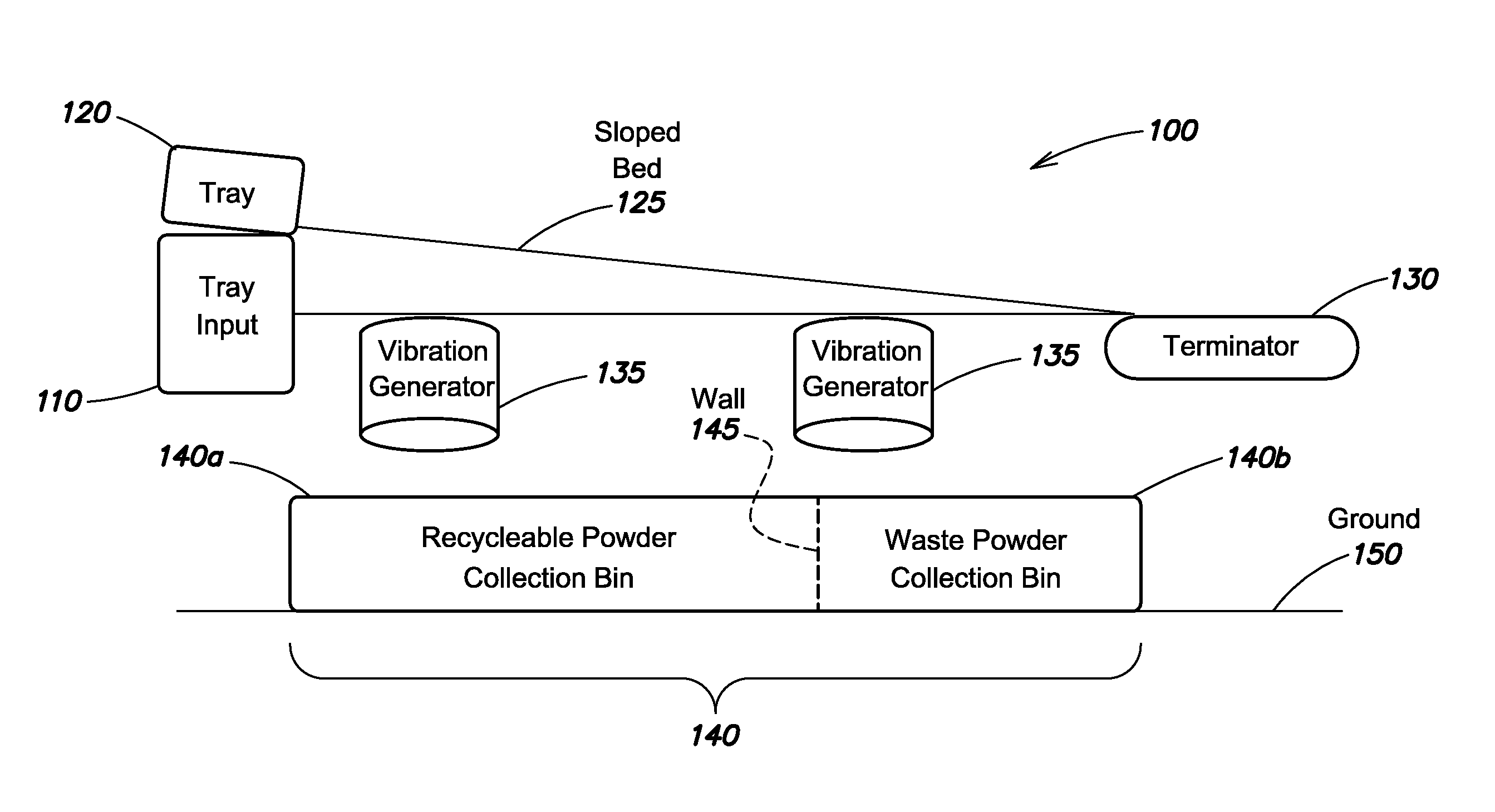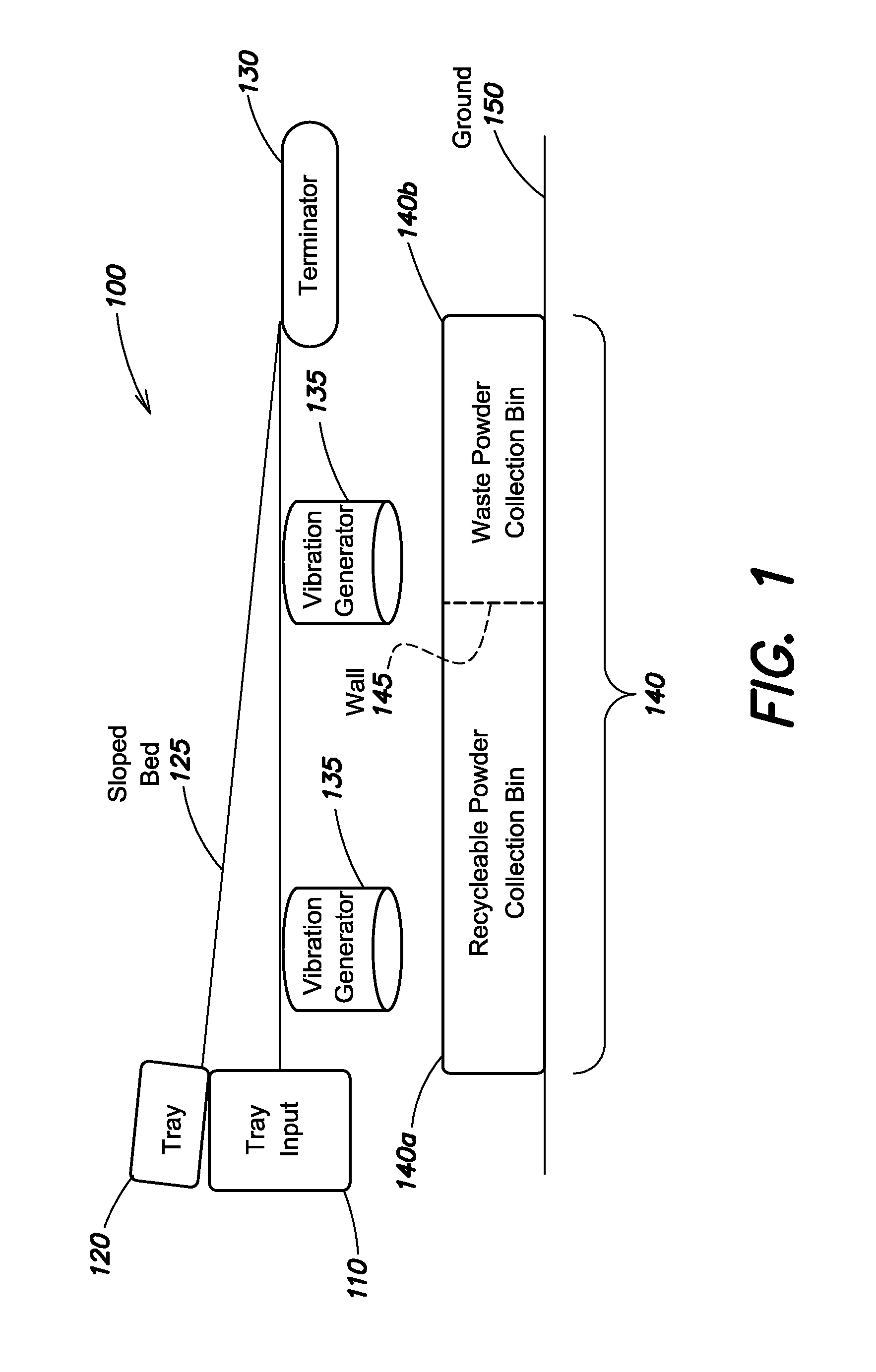Processing of three dimensional printed parts
a three-dimensional printing and processing technology, applied in the field of three-dimensional (3d) printing and processing of 3d printed parts, can solve the problems of vibrating media impacting or vibrating, and achieve the effect of facilitating recirculation of vibrating media
- Summary
- Abstract
- Description
- Claims
- Application Information
AI Technical Summary
Benefits of technology
Problems solved by technology
Method used
Image
Examples
Embodiment Construction
[0061]In a typical on-demand 3D printing process, a 3D model, such as a custom model uploaded by a customer, may be submitting to a manufacturer. The manufacturer may analyze the 3D model to determine whether it is 3D-printable. If the model is printable on a 3D printer, the manufacturer may accept the 3D model and queue the model for production planning. Production planning plans 3D print runs, i.e. builds of 3D models.
[0062]After production planning, one or more 3D parts based on the 3D model may be scheduled to be built inside a tray. In some examples, other 3D parts to be built based on other 3D models may also be assigned to the same tray. For example, a tray may be used to build 50-800 3D parts from various 3D models. The tray is then assigned to a 3D printer. The 3D printer utilizes a SLS process to print the parts by depositing successive layers of powdered printing media, for example, polymeric or metallic powder, and selectively sintering portions of each successive layer ...
PUM
| Property | Measurement | Unit |
|---|---|---|
| Weight | aaaaa | aaaaa |
| Length | aaaaa | aaaaa |
| Width | aaaaa | aaaaa |
Abstract
Description
Claims
Application Information
 Login to View More
Login to View More - R&D
- Intellectual Property
- Life Sciences
- Materials
- Tech Scout
- Unparalleled Data Quality
- Higher Quality Content
- 60% Fewer Hallucinations
Browse by: Latest US Patents, China's latest patents, Technical Efficacy Thesaurus, Application Domain, Technology Topic, Popular Technical Reports.
© 2025 PatSnap. All rights reserved.Legal|Privacy policy|Modern Slavery Act Transparency Statement|Sitemap|About US| Contact US: help@patsnap.com



